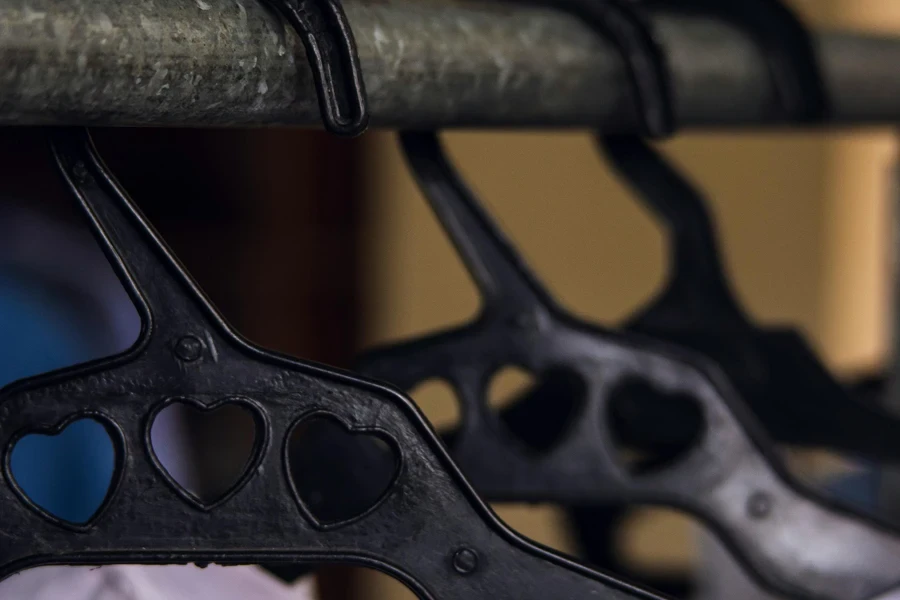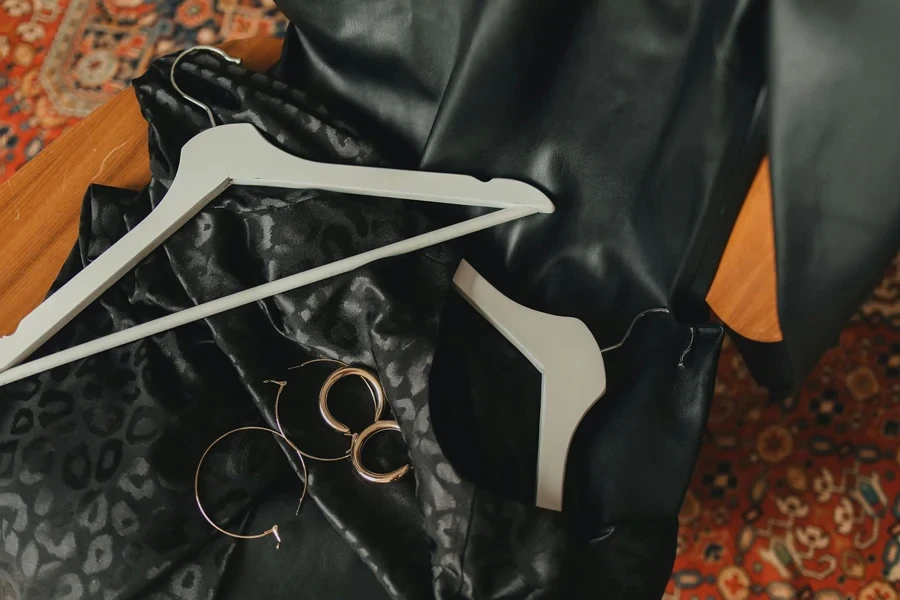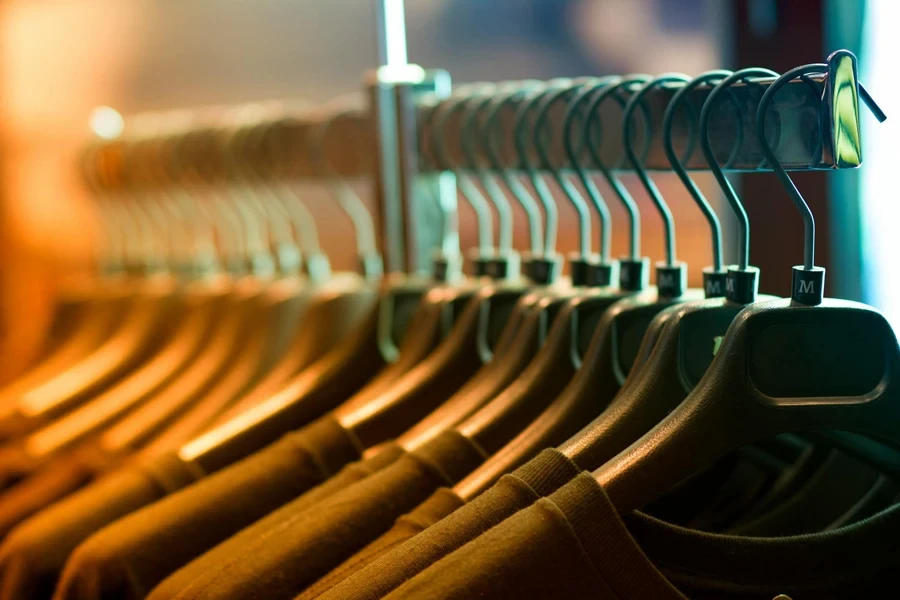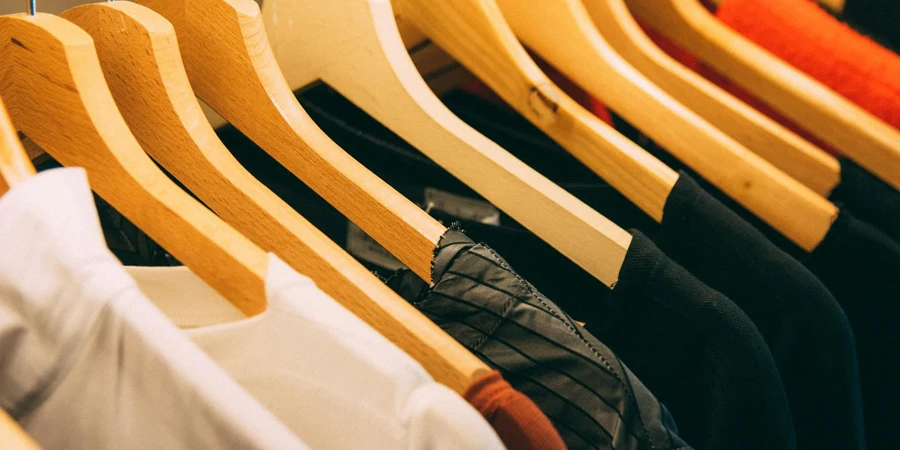Table of Contents
● Introduction
● Market overview
● Different types and their features
● Things to consider when selecting products
● Conclusion
Introduction

Plastic hangers are essential for wardrobe organization, ensuring clothes remain in pristine condition. With the global market projected to grow significantly by 2028, understanding the latest trends and types of hangers is crucial for businesses. From standard designs to specialized hangers for different garments, the variety available caters to diverse needs. Key factors like durability, material, and design play a vital role in selection. Investing in the right plastic hangers not only enhances closet organization but also extends the life of clothing.
Market overview

Market scale and growth
The global plastic hanger market was valued at USD 10,570.27 million in recent years and is projected to reach USD 11,824.6 million by 2028, growing at a compound annual growth rate (CAGR) of 1.89%. This growth is driven by several factors, including the rising demand for cost-effective and durable storage solutions in both residential and commercial sectors. Increasing urbanization and the expansion of retail infrastructure globally are also significant contributors to market growth, according to 360 Market Updates.
Market changes and trends
Emerging trends in the plastic hanger market include the adoption of eco-friendly materials and sustainable manufacturing practices. Companies are increasingly looking to reduce their environmental impact by using recycled plastics and biodegradable materials. Additionally, technological advancements in hanger design are becoming more prominent, with features such as non-slip surfaces, space-saving designs, and enhanced durability gaining popularity. These innovations are aimed at providing better functionality and user experience, which are key factors driving market growth.
The market is also witnessing a shift towards premium and specialized hangers that cater to specific garment types, such as velvet hangers for delicate fabrics and heavy-duty hangers for coats and suits. This trend is particularly notable in the commercial sector, where retailers are seeking good-quality hangers to improve the presentation of their merchandise and enhance customer satisfaction.
Different types and their features

Standard plastic hangers
Standard plastic hangers are typically made from lightweight polypropylene (PP) or polystyrene (PS) plastic. They feature a simple, curved design that is suitable for hanging a wide range of clothing items, including t-shirts, blouses, and light dresses. These hangers often measure around 16-18 inches in width, providing ample support for most garments. The primary advantage of standard plastic hangers is their cost-effectiveness and versatility, making them a staple in both households and retail settings. However, their lightweight construction can be a limitation, as they may bend or break under the weight of heavier garments.
Velvet hangers
Velvet hangers are constructed from durable plastic, typically ABS (Acrylonitrile Butadiene Styrene), which is coated with a soft, non-slip velvet material. This velvet coating provides a strong grip, preventing clothes from slipping off, and is particularly beneficial for heavier items such as coats, jackets, and dresses. Velvet hangers generally have a thin profile, around 1/4 inch thick, which helps maximize closet space. These hangers are designed to support a significant amount of weight without bending, thanks to the strength of the ABS plastic core. They also often include notches on the shoulders to hold garments with straps securely.
Notched hangers
Notched hangers are designed with strategically placed notches along the shoulders, which are engineered to hold items with straps, such as tank tops, dresses, and lingerie. These hangers are typically made from high-density polystyrene or polypropylene, providing a balance of strength and flexibility. The notches are usually around 1/4 inch deep, ensuring that straps remain securely in place without slipping. This design feature makes notched hangers ideal for organizing multiple items and maintaining a tidy wardrobe.
Swivel hook hangers
Swivel hook hangers are equipped with a rotating hook, usually made from galvanized or stainless steel, that allows the hanger to turn 360 degrees. This feature provides greater flexibility and ease of access, making it easier to hang and retrieve clothing items. The hooks are often reinforced and designed to handle the weight of heavier garments without bending or breaking. Swivel hook hangers are ideal for accessories such as scarves, belts, and ties, as well as garments that need frequent repositioning. The hanger body is typically made from durable plastics like ABS, ensuring long-lasting use.
Skirt/slack hangers
Skirt and slack hangers are specifically designed with adjustable clips or bars to hold skirts and slacks securely. These hangers are often made from robust plastics such as ABS or reinforced polypropylene, ensuring they can support the weight of heavier fabrics without bending. The clips are typically equipped with non-slip pads or rubberized grips to prevent creases and wrinkles, and they can be adjusted to fit various garment widths. The flat design of these hangers, often measuring around 14-16 inches in width, helps to maximize closet space and maintain the garment’s shape. This feature is essential for professional attire, ensuring that skirts and slacks remain wrinkle-free and ready to wear.
Things to consider when selecting products

Durability and material
Choosing durable materials is crucial for ensuring the longevity of plastic hangers. Different types of plastics offer varying levels of strength and flexibility. Polypropylene (PP) plastic is known for its robustness and resistance to bending, making it suitable for standard hangers. Polystyrene (PS) plastic, while providing high transparency and rigidity, is less flexible and more prone to breaking under heavy loads. Acrylonitrile Butadiene Styrene (ABS) plastic, used in high-end hangers, combines impact resistance with high-temperature durability, making it ideal for heavy-duty hangers that need to support coats and suits. Understanding these material properties helps in selecting hangers that can withstand the intended usage without degrading quickly.
Design and functionality
The design of a hanger significantly impacts its usability and space efficiency. Features such as notches, swivel hooks, and velvet coatings enhance the functionality of hangers by providing better grip and preventing clothes from slipping. Thin-profile designs maximize closet space, allowing for more efficient storage solutions. Good quality hangers often incorporate ergonomic shapes that maintain the garment’s form, preventing wrinkles and creases. When selecting hangers, look for features that align with specific storage needs, such as notched hangers for strappy garments or tiered designs for space-saving purposes. Investing in well-designed hangers can improve both organization and garment care.
Environmental impact
Considering the environmental footprint of plastic hangers is becoming increasingly important. Traditional plastic hangers are often made from non-biodegradable materials, contributing to environmental pollution. Eco-friendly options include hangers made from recycled plastics or biodegradable materials, which help reduce waste. Some manufacturers are also adopting sustainable practices in their production processes, such as using less energy and minimizing emissions. Opting for recyclable or biodegradable hangers can significantly lessen the environmental impact, supporting a more sustainable approach to wardrobe management.
Price and value
Balancing cost with quality and durability is essential when choosing plastic hangers. While standard plastic hangers are inexpensive and suitable for everyday use, investing in good quality hangers made from ABS or reinforced polypropylene can offer better long-term value. These hangers, although more expensive upfront, are less likely to break or wear out quickly, reducing the need for frequent replacements. The long-term benefits include better garment care, improved closet organization, and a lower environmental impact due to reduced waste. Evaluating the price-to-value ratio helps in making informed purchasing decisions that benefit both the budget and the quality of clothing storage.
Conclusion

Choosing the right plastic hangers is crucial for maintaining an organized and efficient wardrobe. Understanding market trends, the variety of hanger types, and key selection criteria enables businesses to make informed decisions that enhance garment care and optimize storage solutions. Investing in good quality, durable, and environmentally friendly hangers can lead to long-term benefits, ensuring that clothes remain in excellent condition and storage spaces are used effectively.




